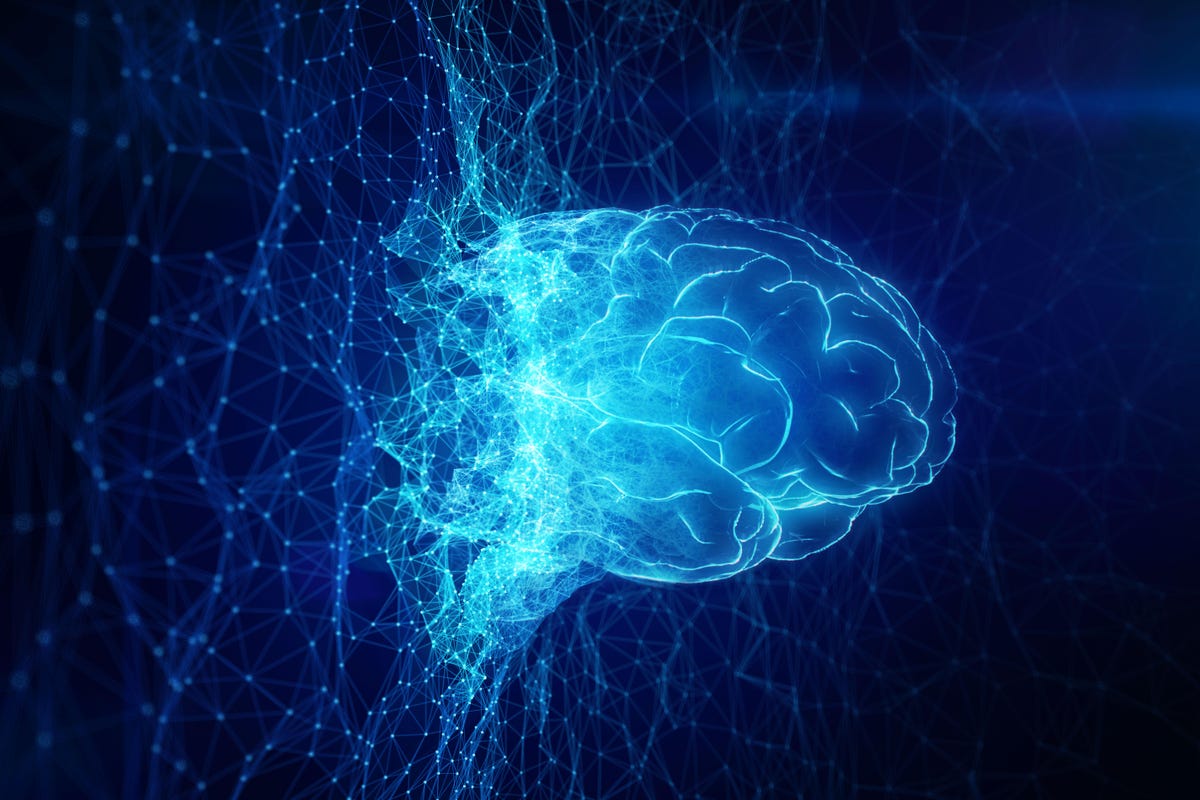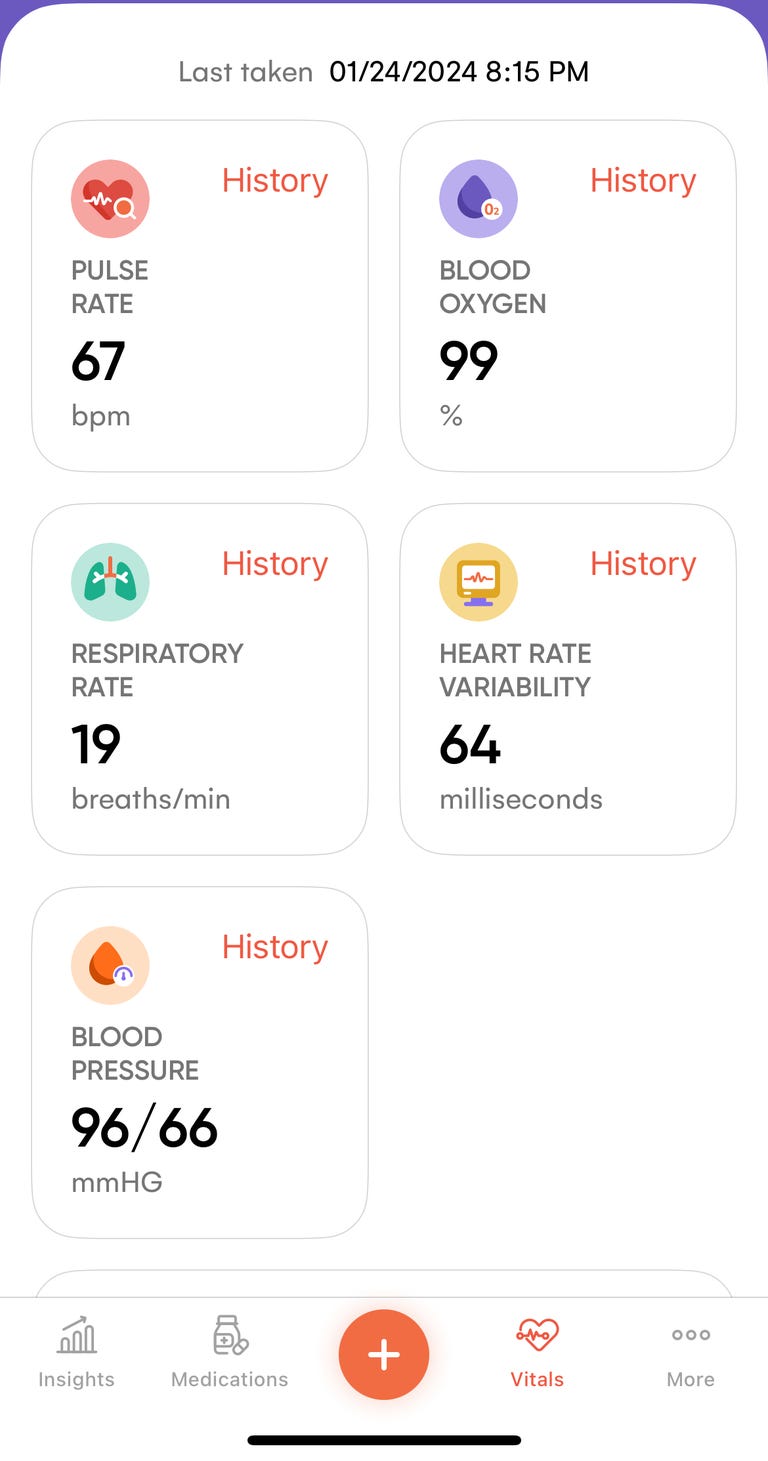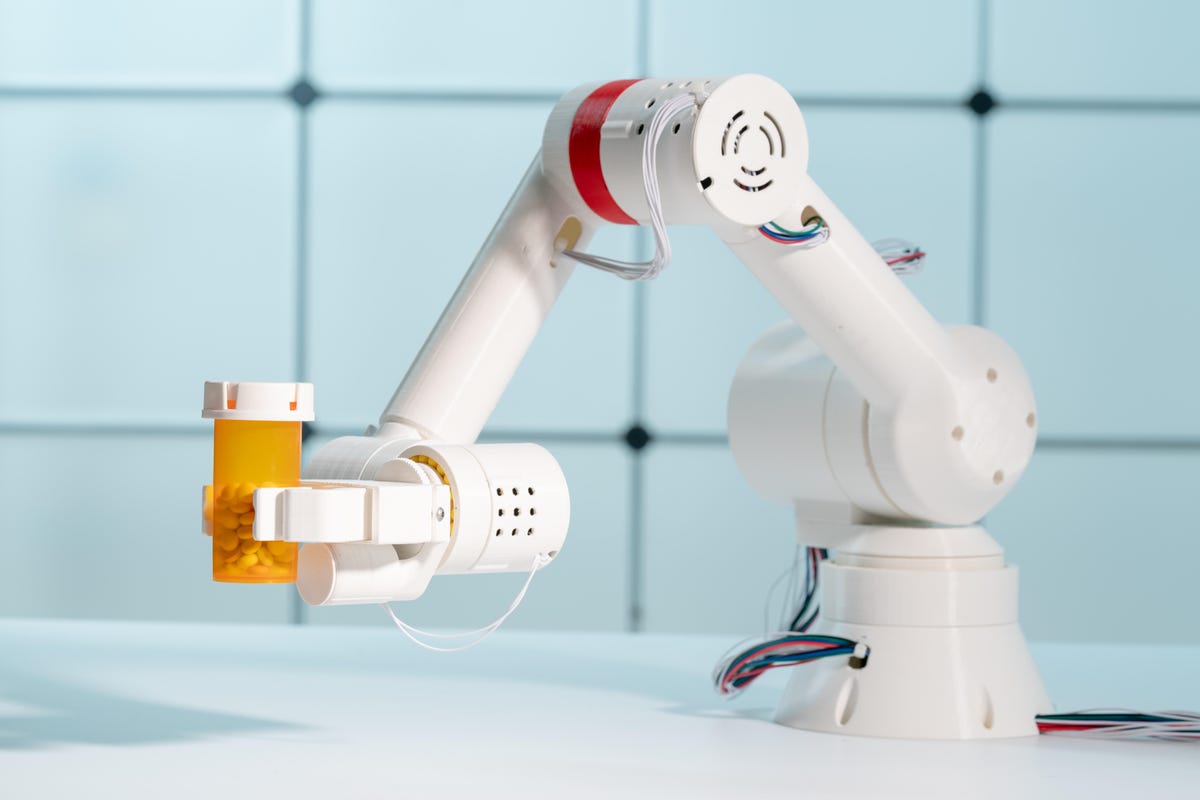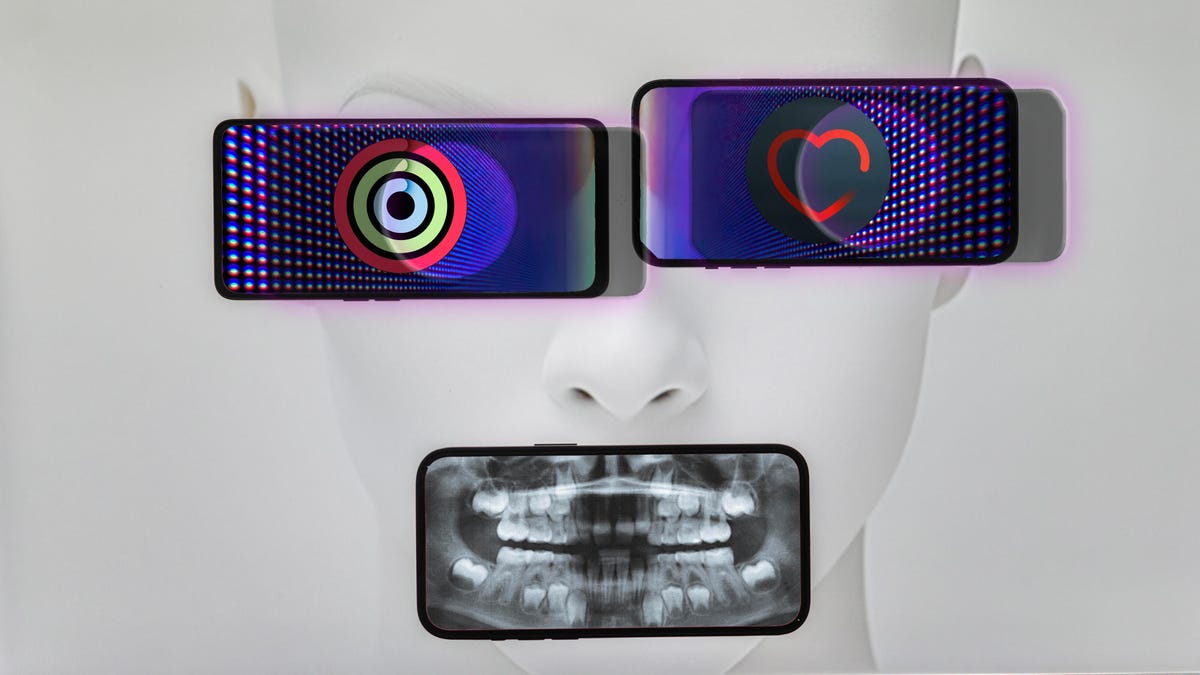As technology develops, so does our view into our health. And lately, more and more wellness companies have been advertising the use of artificial intelligence in their apps and products. There are mirrors that claim to tell us how old we look and apps that look at the blood flow beneath our skin to take our blood pressure. But is AI-powered health tracking actually making us healthier yet?
Beyond the headlines, much of the AI health spotlight has been in medicine on the clinical side, rather than consumer tech. Doctors and scientists see AI’s promise as a key diagnostic tool that can catch cancer and other deadly diseases sooner, giving people more time for treatment and potentially saving lives. The US Food and Drug Administration has cleared AI for many medical uses. (However, no “generative” AI uses had been approved as of its latest update, on Oct. 19, 2023.)
Available now to people interested in getting an internal view of themselves head-to-toe are full-body AI scans — a new type of MRI, which companies say can make quicker diagnoses of cancer, aneurysms, liver disease and other life-threatening conditions. But many doctors say this model isn’t quite ready for the mainstream, largely because it doesn’t align with the typical “risks versus benefits” assessments used in traditional medicine.
Outside the clinics, AI’s impact on consumer wellness is less clear right now. The growing number of apps and trackers that promise to reveal things about your health that you wouldn’t otherwise know may leave you with the feeling you’re never without some sort of symptom or health metric that needs to be tracked down — and this assumes they’re accurate readings in the first place.
How useful all of this is will depend on what you’re looking for, whether the tech is capable of pulling meaningful information from health data, and what you do with that information afterward. If it continues on the path of more traditional activity trackers, they just may put a little health pep in your step. According to a systemic review published in The Lancet in 2022, activity tracking has provided some real health benefits. Crucially, activity trackers demand you’re active, but the same can’t be said for all types of health tracking.
“The conversations seem to end with the tech,” Dr. Maame Yaa Yiadom, an associate professor of emergency medicine at Stanford University who leads a lab of AI research. The tech is “only as good as it helps people through a journey with their health care providers,” Yiadom said. This includes screening, making a diagnosis, coming up with a treatment plan and getting to a better health state, she added.
Here’s a glimpse at some of the newer wellness apps and technology that either pick at the root of our health, or offer some novelty traditional health-trackers haven’t been able to touch yet.

Can you find the ‘silent killer’ with an app?
Together by Renee is an app made by Dr. Renee Dua, a kidney specialist in the San Fernando Valley. She started developing Together to serve as a “health assistant” when she took on a caregiving role after her father became ill. Similar to other wellness apps, like Apple’s Health app, the purpose of Together is to collect health data in a shareable form and make keeping tabs on wellness less cumbersome.
The app uses AI to achieve some of the things that previous tech has long been taking care of, like keeping track of medication and providing certain heart health readings, including blood pressure, often dubbed the “silent killer” for its lack of obvious symptoms. You run this test by taking a long selfie — you hold your phone up for 60 seconds — which allows intelligence “on the back end” of your phone to comb out certain health metrics by looking at the spectrum of color on your skin, Dua said.

It also measures your “mental fitness” through vocal tracking, which is becoming a popular way for AI to comb for health information. After a 30-second voice memo, the Together app will rate you on vocal smoothness, control, liveliness, energy range, clarity, crispness, speech rate and pause duration.
“Listening to the intonations in the sound of your voice, we’re able to see if you’re anxious or depressed,” Dua said. By combining all of the health metrics into one app you may glean whether your high blood pressure is caused by anxiety, she explained as an example.
I took my blood pressure using the Together app at the same time as I took it on a traditional pharmacy blood pressure machine — a Higi at RiteAid. This machine put me at 107/69 with a pulse rate of 64. The app measured 96/66 with a pulse rate of 67. I was expecting some kind of difference — accurate blood pressure readings require consistent measurements over time following specific criteria based on the particular monitor. (Note: This is by no means a great comparison or study. To get a better read comparing home blood pressure readings, you’d need multiple readings across multiple days.)
The outside party software used on the Together app for vitals such as blood pressure has been submitted to the FDA for clearance, Dua said. If given clearance, the app would then theoretically be able to detect health metrics similar to other devices on the market.
But this shouldn’t this be a replacement for a doctor-recommended blood pressure monitor — especially if you know you have high blood pressure. Very similar to the data you can download in PDF form from an Apple Watch, or the sleep data you can zap to your therapist after it’s collected on an Oura ring, this is additional information you can use to complement your own wellness portfolio.
“We’re not trying to replace your doctor,” Dua said. “This is a guide and it should be used as such.”

AI is exploring uncharted health-tracking waters
An app that tells you how much you’re coughing likely wasn’t at the top of your widget wish list, but it’s a great example of how AI is taking pattern recognition and extending it into more areas of wellness.
If you’re telling a doctor about your cough, you’re generally limited to two types: There’s “productive” coughing with phlegm, and “unproductive” coughing, which is considered dry.
Now there’s an app to tell you how much you’re coughing during the day. It’s called Cough Tracking and is made by Hyfe AI. According to research shared by the company, it’s measuring up to accuracy standards and highlighting chronically coughing individuals who may benefit from additional screenings. However, when I had it up, it only appeared to count the coughs I coughed on purpose — little throat clears or softer coughs weren’t detected by the app, making me skeptical about its ability to detect milder symptoms. (I was not sick while using the app.) Still, companies adding cough-tracking to the home health world could be useful, given cough frequency’s connection to underlying health problems.
AI may also boost the usefulness of activity trackers. For example, sleep tracking with Whoop may make data more insightful. January is an example of another app that uses AI to offer insights into your nutrition and blood sugar when used with a continuous glucose monitor, a growing market in the wellness world.
Read more: Could Your Future Workout Buddy Be a Robot?
How hospitals are using AI to catch heart attacks
When someone walks into the emergency room with symptoms of a heart attack, every second counts. Six hundred of them to be exact — because 10 minutes is the amount of time emergency departments have to diagnose a patient with a heart attack, according to Yiadom.
To close in on those crucial moments, Yiadom and her lab built a predictive AI model to help emergency department staff “get the right patients the right tests” while they’re still in the waiting room. The goal is to speed up diagnoses, catch more heart attacks and hopefully save more lives.
So far, the predictive model has been up to the task. According to results of a study published this summer in the journal Diagnostics, which examined past medical records and patient diagnoses, the predictive model outperformed emergency room staff in terms of how many heart attacks it missed: 17% compared to 27%. When the computer programming was paired with a human, performance excelled more than either did on their own: 10% more heart attacks were detected.
While it’s not necessarily consumer tech, AI’s increasing presence in medicine shows how algorithms are “moving from research into practice,” according to James Zou, an assistant professor of biomedical data science at Stanford University. Research in which Zou participated used insurance claims to find how AI devices are being used in hospitals, finding those used to assess coronary artery disease and diabetic retinopathy have had the most use.
“Most of the FDA-cleared AI models have not seen much usage yet, so we are still in the early stages,” Zou said in an email.

So you have more health information. Now what?
According to Dr. Ethan Goh, a physician and artificial intelligence researcher with Stanford University, it makes sense that people continue to invest in technology, whether it’s called AI or not, due to the “significant gap” that persists in what people are dealing with and ways to manage it. What’s more, generative AI tools like large language models (think ChatGPT) provide an opportunity for “increased personalization and engagement.” That’s a combination many people crave and need when it comes to their health care.
Goh said that another important thing to remember when talking about AI is that it’s often used as “just a buzzword.”
“There’s been research that shows that most health apps that use AI chatbots use rule-based approaches and finite-state dialogue management that rely on directing users through predetermined paths to provide responses,” Goh said, pointing to a 2022 review in Nature Journal. Among other findings, the authors wrote that several apps they reviewed claimed “AI” but provided no further details on the technology.
But all of the finest apps and wearables mean nothing for your health if you don’t act on the data they give you. Connecting the dots and changing your behavior to be something more beneficial to you could be the sweet spot of health apps and other wellness technology, according to Samantha Kleinberg, an associate professor at Stevens Institute of Technology and AI researcher.
“Often, you need other information to give context to the values you’re getting,” Kleinberg said. “Usually that requires a little bit of effort for people to track.”
We could say, then, that for now, how useful AI is for your health isn’t determined by the data or metrics themselves, but what you do with them.
Editors’ note: CNET is using an AI engine to help create some stories. For more, see this post.

